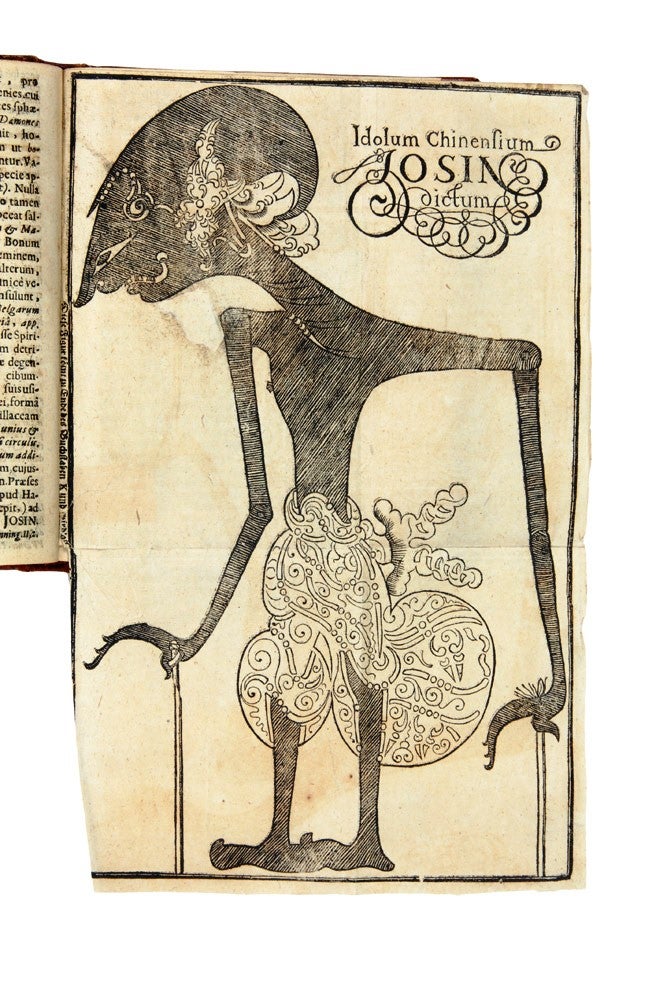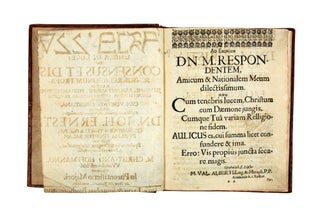Umbra in Luce: Sive consensus et dissensus religionum profanarum…
Umbra in Luce: Sive consensus et dissensus religionum profanarum, Judaismi, Samaratanismi, Muhammedismi, Gingis-Chanismi, atque Paganismi…
Jena: Bauhofer, 1667.
Small quarto, with nine woodcuts throughout the text and a folding plate; in modern gilt ruled mottled calf, leaf of manuscript notes dated 1718 pasted to front blank endpaper.
Esoteric idols and child sacrifice
Scarce comparative study of non-Christian religious practices (religionum profanum), containing a striking assemblage of woodcut plates depicting exotic idols from the Middle East and Asia.
Scarce comparative study of non-Christian religious practices (religionum profanum), containing a striking assemblage of woodcut plates depicting exotic idols from the Middle East and Asia.
This esoteric book on comparative religion was authored by Johann Ernst Gerhard, orientalist and professor of theology at the University of Jena. Johann Gerhard clearly identifies his own faith as a Christian of Jena (indeed, he was the son of the notable seventeenth century Lutheran theologian of the same name). This is a work of some scholarly and linguistic breadth, surveying the beliefs and practices of Judaism, Samaritanism, Islam, and paganism This final category includes Chinese and Hindu deities, as well as the ancient gods of the Mongolian steppe ('Gingis Chanismi'). Gerhard's book is in sympathy with the universalising tendency of seventeenth century scholarship, where parallels of belief such as fertility goddesses and trinitarianism are proved among disparate cultures. Nonetheless, the legitimacy of pagan belief is consistently denied in the light of Christian monotheism.
A challenge for any printer of the seventeenth century, the text comprises a range of typefaces including Arabic, Hebrew and Greek. It includes a smattering of truly exotic and probably fanciful words printed using woodcut inserts (Tibetan and Elamite being two such examples). The woodcut images and folding plates are visually arresting, and include the flaming bronze idol of Moloch, purportedly the site of child sacrifice in ancient times. Other images present a Mayan glyph, Toman coins, and a Hindu god. The folding plate depicts a Javanese shadow puppet.
With an early nineteenth century bookplate of the Linonian Meeting, a secret society founded at Yale University in 1753.
Condition Report: Title a little stained and narrowly shaved at bottom margin, final leaf repaired with small loss of text at one corner, single leaf V3 supplied in facsimile; a good copy overall.
Price (AUD): $1,285.00
US$836.22 Other currencies




